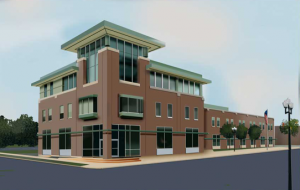When we first started building interactive maps back in 2008, it wasn’t uncommon for most of the maps on websites to be little more than a PDF download of a print map of the campus. A lot has changed over the past eight years, and although we do still run across this scenario from time to time, most organizations now have some sort of interactive map. Even though the look and design of these maps may vary, there are still a few elements that are considered best practices for an interactive map.
Engaging Content
Content is king! It is content that is the difference between that traditional PDF print map and this wonderfully engaging interactive map. Pictures, descriptions, 360s, videos, and audio all help tell the story of your campus. This engaging content is what allows you to take the map as a functional tool and transform it into an engaging, interactive, and immersive experience for your audiences. In addition, the map provides structure and location to pictures and stories, cohesively tying all of these elements together.
The main reason an interactive map is such a powerful tool is the relationship between the structure of the map and the storytelling of the content. Think of it like a peanut butter and jelly sandwich: the sum of the whole is better than the two individual parts.
 Apply or Request Information
Apply or Request Information
Hopefully, you are exploring the idea of an interactive map as a marketing tool to drive more interest in your institution. From a recruitment standpoint, it can be extremely valuable to provide your website visitors with a clearer sense of your campus so three outcomes are achieved: they want to visit in person, apply, or request more information. If one of those three outcomes is your goal, then you want to ensure you have a conversion form linked from your interactive map page to make these steps easy for the visitors. Instead of requiring the website visitors to explore other parts of the website to take this next step, make it an obvious part of your map page.
Directions
Returning to the functional properties of your interactive map, mapping was originally created as a way to provide directions to locations. When we think of directions for an interactive map page, there are a few types that you want to include:
- How to get there: “If I am here, then how can I get to other locations on the map?”
These kinds of directions are extremely important. Website visitors may not be on campus at the same time they are viewing your interactive map; however, your interactive map should provide directions as if the visitor is presently on site.
- How to travel between locations: “If I am already on campus, how do I get from point A to point B?”
Most of these directions can be accomplished by simply viewing the map and landmarks to help the map user figure out how to travel between the two locations. If your map has the functionality to tell the users exactly how to do that, even better!
- Location: “Where am I now?”
GPS is a default element of smartphones today so if your map user is on campus viewing your interactive map on a smartphone, your interactive map should have the ability to tell them exactly where they are on the map.
One more note: Traditionally, when we think of most maps, north is at the top. Most mapping platforms follow this standard. However, if you have a nice map illustration that you are using for your base layer, then it is ideal to have a compass located on the illustration to let users know where north is located on this rendering.
Legend
Legends are incredibly helpful. In many ways, legends were some of the first databases ever created. Legends structure the data of the map into meaningful buckets. Additionally, the legend can help you see a list of locations on a map and find them through numbers. A legend could organize places and locations into categories or groups to help users narrow down the possible locations they are searching. The legend can also be extremely useful to get a general idea of all the buildings and locations of a campus a user could visit. Legends are an important way to organize and display information in a useful way for your interactive map visitors.
Probably the most useful feature of PDF maps was the ease of printing them, thanks to their formatting. With the flexibility of people’s ever-present smartphones, print maps have lost some of their usefulness. However, this doesn’t mean that the ability to print a map has become obsolete. If a smartphone’s battery dies, or a user wants a larger view of a map, or a user wants to give the map to someone else, the ability to print is a must-have feature.
Over half of the map elements listed above were part of original PDF map downloads: directions, the ability to print, and legends. We revolutionize the traditional map experience by engaging users in some of the fundamental elements of a map and adding connectivity and engagement. Other elements, such as the ability to schedule a visit, request information or even apply are further enhancements to your interactive map. Using this engaging tool in collaboration with your marketing efforts will further enhance the appeal of your website and your organization.
